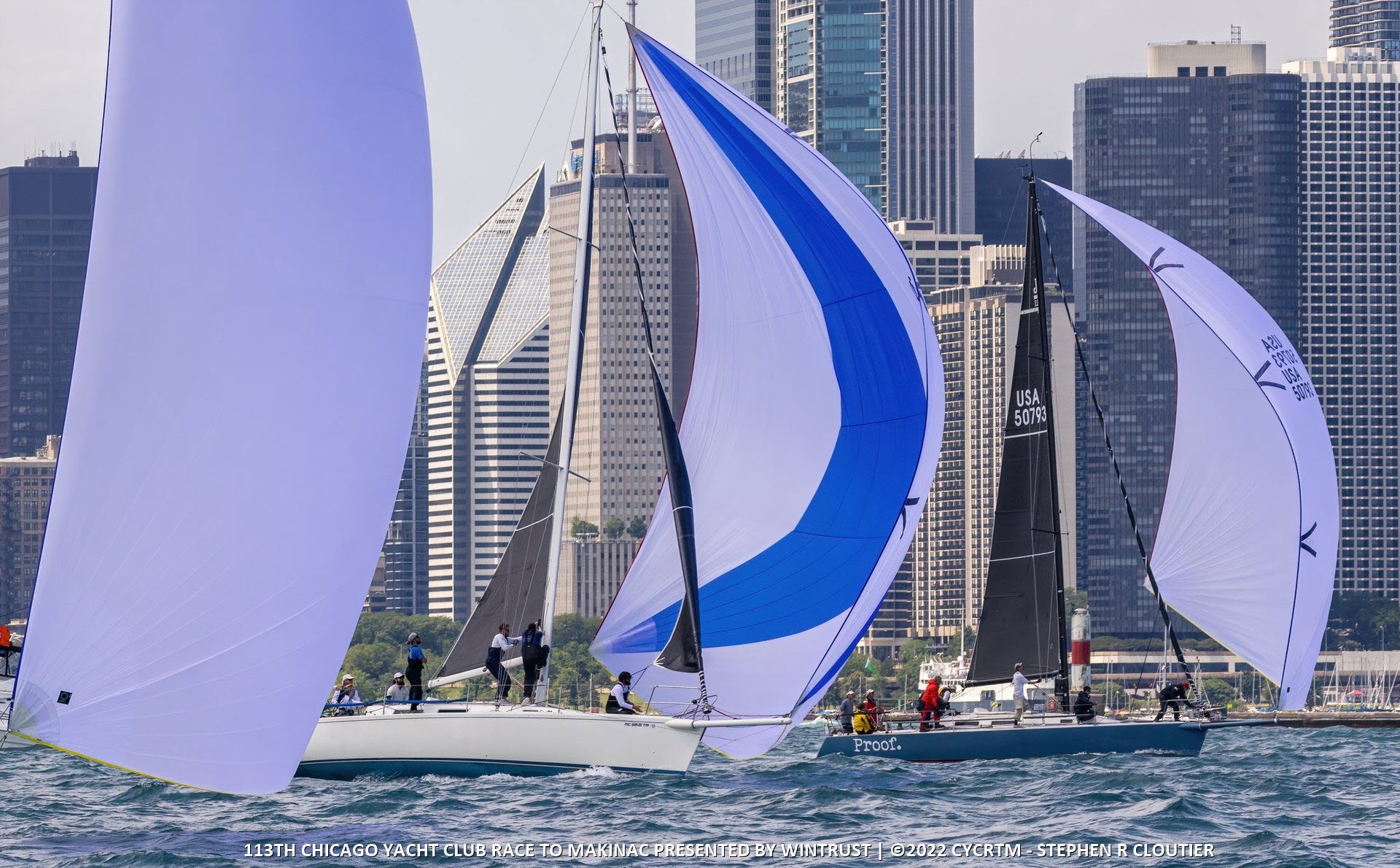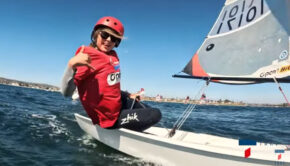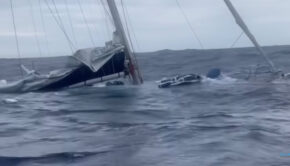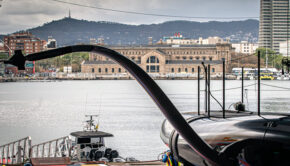What is your level of preparation?
Published on August 11th, 2022
Wally Cross with Quantum Sails is an inspired educator, and in this report he shares some of the secrets of doing well on the race course:
A 100% prepared sailing program does not exist but believing your boat and team is better prepared than your competitors allows you to enter the course with a high level of confidence.
The main ingredient for preparation perfection is not money, but a good system for organization.
Sailing with a well-prepared boat and team allows you to sail without concern about being a step behind. A boat that is prepared is looked at in pieces, each is equally as important as the other.
The Boat
Picking the proper boat to race in a one-design class or handicap is the first step in being prepared. Your boat should be strong, light as possible, clean and attractive. I claim my car runs better when I wash it, and I do believe a nice clean boat sends a message of speed.
The individual pieces of the boat are collectively important. Take note of the details that are essential to each piece:
• Hull/Deck/Interior: dry, strong, waterproof, clean, attractive
• Bottom/Keel/Rudder: fair, symmetrical, smooth, hard finish
• Rig/Boom/Prod/Pole: polished, low windage
• Rigging Standing/Running: low stretch, clean, well-marked
• Instruments: calibrated, consistent, true values
• Sails: proper shape, strong, wide range
• Hardware: efficient, light, strong, minimal
To compete at the top of your class, every component of your boat needs to fit together. Sails are not more important than the bottom being right, or the mast smooth, or instruments working well. They all must be well looked over and maintained to be the best possible piece to your preparation puzzle.
The Team
Your crew needs to buy into the system for sailing your boat. Each boat is managed differently, yet the best teams work well together not only on the water. For this article I am assuming the team consists of all Corinthian sailors who hold down normal jobs and can only sail a few selected events each year.
Goals for winning teams:
• Recording settings: history of all racing, meeting prior and after racing
• Three teams:
» Speed: rig, sail trim, steering, weight (heel-trim)
» Information: race instructions, weather, wind, competition, instruments
» Mechanical: tacking, gybing, hoist, douse
• System to record, remember, evaluate, improve
Logistics
Everything unrelated to the boat or sailing is logistics. Some racing programs have separate people or persons that handle all organization that makes racing easier.
Logistic tasks are:
• Regatta dates, crew practice, time at boat
• Delivery of boat
• Lunches, liquid, meals
• Registration, hotels, flights
• Safety requirements
• Rules, ratings, membership
Teams that are organized with a logistic system sail with more confidence. They also benefit from having less concern with details unrelated to sailing.
Bayview and Chicago Mackinac Races 2022
This year’s Mackinac races were a tale of two extremes. The Bayview race was about 12 hours longer than normal while the Chicago race was almost 12 hours faster. I had the pleasure of racing on the J/120 Proof as owners Mike Fozo and Robin Kendrick were kind enough to allow me to sail both races on their boat.
The process for race winning preparation started the winter of 2021. Once I know what boat I am sailing for the next summer’s races, I start making a list of items to check off. My checklist includes:
• Bottom of Boat: make sure it is fair, hard paint, smooth, low drag
• Interior: light in weight, minimal weight forward of mast, aft of ladder
• Mast, Boom, Deck: running, standing, rigging (all in great shape – not too much)
• Minimal spare equipment all in one dry bag
• Order 30-liter dry bags for crew gear
• Dry bags for all safety equipment
• Jet boil burner for hot liquid and freeze dry food
• Sail Upgrade: new A2, new GS Staysail (check over all sails)
• Instrument Goals: accurate true values with heel, fore and aft trim value
• Crew and numbers (usually one or two more for Port Huron than Chicago)
Mike Fozo was great at assembling all the pieces necessary to have a prepared J/120 for the 2022 sailing season. We would meet at the boat to see how we could concentrate weight more in the mid-section and less in the ends. Also, time was spent getting the rig set for changing conditions. We spent one day looking at all the possible sail options and starting a crossover chart.
The crossover chart describes where your sails fit in terms of wind angle and wind speed. It takes time to make this chart accurate. We can make a generic one for any boat, yet each time spent on the water is valuable in perfecting this chart. An accurate chart minimizes decision making when making a sail call.
The boat now was getting close to being prepared for the first of two long races. The Bayview race started on Saturday, July 16. This was our preparation timeline:
July 11 – crew information on boat call (3 hours prior to start)
July 12 – day one of weather information (all weather models)
July 13 – boat is pulled out of water to clean and make boat bottom smooth
Jul 14 – more weather information and final sail selection for boat delivery to Port Huron
July 15 – boat leaves early to Port Huron, more weather information, crew is updated on conditions
July 16 (Race Day) – morning weather call, travel to boat, meeting on boat 3 hours prior to start, leave dock 2.5 hours prior to start, wash bottom near starting area with banding prop 1.5 hours prior to start, start sailing 1 hour prior to start
This timeline of pre-race preparation allows the team, and especially me, to feel prepared. Starting the race with all the boxes checked allowed us to handle the challenging light conditions. Knowing that this race was going to be slow, we put an emphasis on:
• Clean and smooth boat bottom
• Sails for light winds
• Minimal spare equipment
• Weight placement low, forward (trim meter 0 to -1 degrees of bow down trim)
• Rig set for lighter winds (turns off V1 shrouds)
• Weather information every four hours
The result was winning the class by almost an hour.
The Chicago Mackinac was one week after the Bayview race. One of the bigger challenges for this race was getting the boats from Mackinac Island to Chicago. The mid-summer southerlies were in rare form, making traveling south a slow journey for all teams. It was clear by the Wednesday prior to the race’s start that this was going to be a much different race.
The prediction for the 2022 Chicago Mackinac race was storms.
The Chicago Mackinac Race started on Saturday, July 23. Our timeline for preparation was:
July 20 – change from light air sails to sails for more wind
July 20 – weather information (more accurate when velocity is higher)
July 20 – boat still in transit from Mackinac to Chicago
July 21 – boat arrives in Chicago after a tough delivery
July 21 – crew information on boat call and gear to bring for increased winds
July 22 – updated weather information continues to predict high winds in storms
July 22 – boat inspection, crew to meet at boat next day 3 hours prior to start
July 23 – crew meets at boat for pre-race meeting:
• Discussion on how to prepare for squall, sails, goals, execution
• Shift in watch system, early rest to sail all night in big breeze
• Starting goals with big picture set up
• Morning rain and effect with land breeze
• Bottom cleaning at dock
• Dock out 2 hours prior to start
Unlike the Bayview race, this one started out fast and as predicted, the storm squall did arrive late evening and continued throughout that first night. Two hundred forty boats raced in the Chicago-to-Mackinac and 29 had to drop out because of boat failures. Fortunately, the Proof team was prepared and pushed hard all evening to win the class and the overall prize by almost two hours over the next boat.
I enjoy being a part of a well-prepared program and watching teams that illustrate how preparation can bring success. After the finish of the Chicago Mackinac race, I went to Harbor Springs in northwest Michigan to watch the Ugotta Regatta in one of the most beautiful areas in the world.
Harbor Springs did not disappoint in weather or wind, and both were perfect for racing all different sizes and styles of boats. The one boat that stood out to me was Doug DeVos’ TP52 Windquest. They do set the standard for an extremely well-prepared boat and team.
I had the pleasure of racing on Windquest last summer at Bay Harbor. The level of preparation was the highest I have ever seen. Meetings in the morning and after sailing allowed the team to review and plan on productive days.
A well-prepared sailing team and boat will produce better results. A team that feels prepared expects to have a good finish versus simply hoping to do well.
What is your level of preparation?










 We’ll keep your information safe.
We’ll keep your information safe.